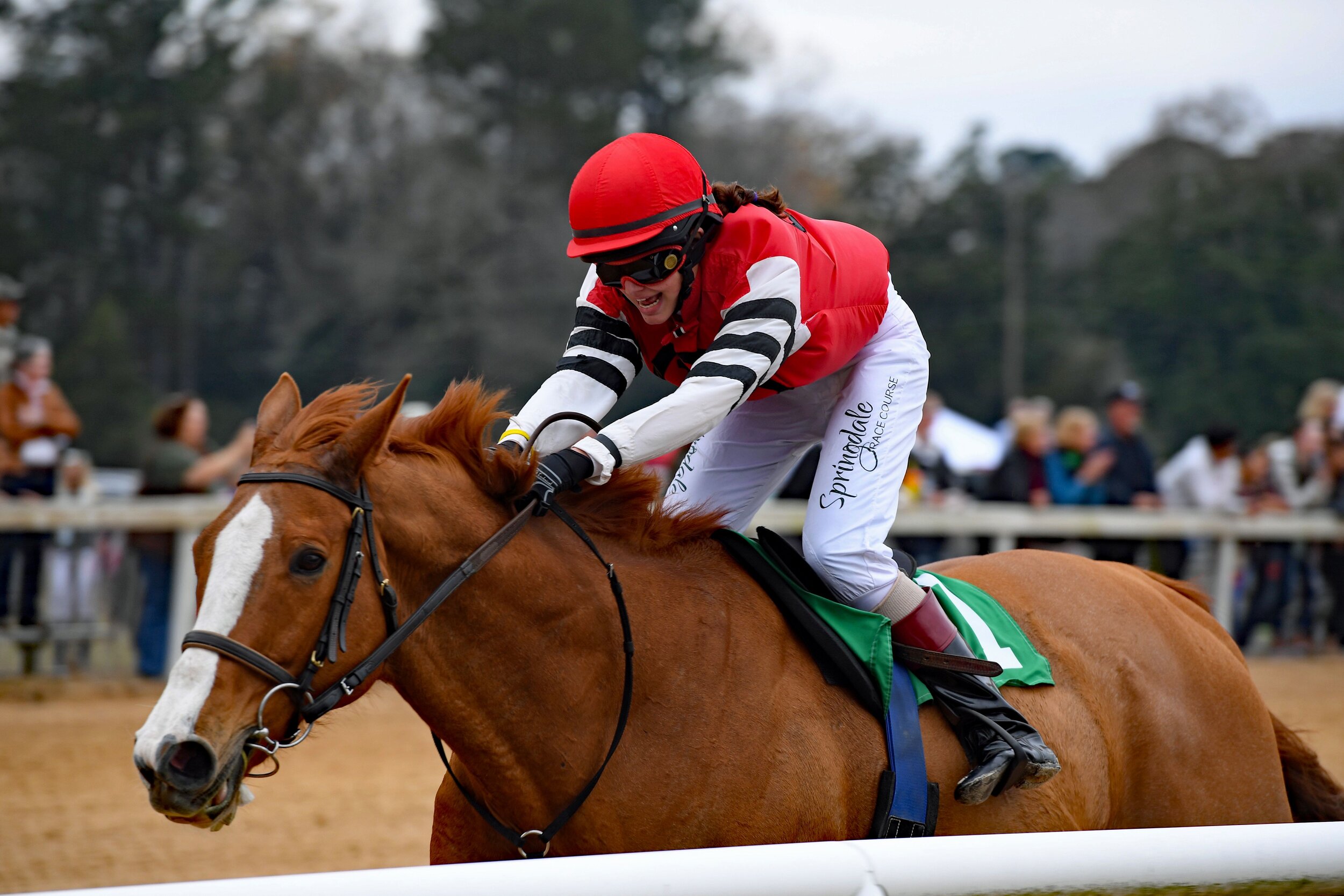Racing's Rite of Spring On Pause – Life Goes On In Aiken Without the Trials
Photo by Tom Ferry.
It is another spectacular winter day in Aiken, South Carolina. There is a chill in the air during the morning hours, but windbreakers are removed in the afternoon when the temperatures get satisfyingly warm.
The Aiken Training Track.
Photo by Tom Ferry.
Something is different, however, in this town of nearly 31,000 people.
The anticipation of Spring this year has been tempered by the cancellation of the 79th running of the Aiken Trials due to COVID-19. The Trials were scheduled for March 13 at the legendary Aiken Training Track.
Developed in 1942 as a way to give young Thoroughbreds in training the opportunity to experience every aspect of live racing, the Aiken Trials is the first leg of Aiken’s Triple Crown events, held annually for three consecutive Saturdays in March. It consists of six races on the day’s program, five races for two year-olds and maidens, running a ¼ mile to 4½ furlongs, and a single race for older horses that have already won a race. Last year’s Trials did take place shortly before COVID-19 escalated, subsequently disrupting sporting events across the country.
The tradition of equine excellence in Aiken, however, is far greater than a single race day.
For more than eight decades, the training track has provided an ideal winter and early spring environment as well as the premier training ground for countless young horses. Since the early 1940’s, these hallowed grounds have been graced by more than 40 racing champions, including Kelso, Swale, Tom Fool, Gallorette, Pleasant Colony, Gamely and Shuvee.
While Aiken has been a popular equine haven since the early part of the 20th century, everything changed in 1941 when Fred H. Post and son William came to town to play polo. Impressed by the town, Post envisioned a training track to help condition his racehorses. Inspired by the racecourse at Lexington, Kentucky’s Keeneland, a group was organized to build the one-mile oval Aiken Training Track on 75 acres that included part of two polo fields. The final design featured a 75 foot-wide homestretch, 60 foot-wide turns, a 60 foot-wide backstretch and a steeplechase course in the infield. A charter was received on May 6, 1941 and in November of 1941 the training track opened.
Nearly six months later, 200 horses were committed to training at the track.
Among the owners were legendary names in the sport including Whitney, Phipps, and Vanderbilt, and renowned stables such as Claiborne, Rokeby, Bohemia and Dogwood. Success was immediate when track trainee Shut Out won the 1942 Kentucky Derby (G1) and Elkridge was named 1942 Champion Steeplechase horse.
A solitary oak tree sits in the track’s infield. It is one of the most recognizable and iconic images in the world of Thoroughbred horse racing. It is known as Blue Peter’s Tree.
In 1948, Blue Peter was a two year-old bay colt from Aiken who won eight of 10 races during his juvenile season. His victories in races, including the Belmont Futurity (G1) and the Hopeful Stakes (G1) resulted in him being named America’s Champion Two Year-Old Male. The following year, Blue Peter grew ill with a suspected case of appendicitis. On January 12, 1950, he died at age four and a heartbroken Aiken community paid tribute to their hero by burying him beneath the live oak.
Training over the Aiken Training Center.
Photo by Tom Ferry.
The drive to the training track passes through the memorable tunnel of live oaks on South Boundary Avenue and then over to Two Notch Road Southeast. One can view the track and its surrounding buildings from the scenic roads that border the area.
The complex includes training opportunities on both the one-mile and 5/8th-mile tracks. The mile track has a red clay base with a sandy loam cushioned surface and banked turns for better rain run off. The sandy soil has always been ideal for varied equestrian activities.
The Aiken Steeplechase Association hosts two annual events that draw more than 30,000 spectators. The Aiken Spring Steeplechase, also known as The Imperial Cup, is the second jewel of the Aiken Triple Crown. This March event has been canceled for 2021, but October’s Holiday Cup is still on the schedule.
Aiken is also considered one of the world’s polo capitals. While the track is used for flat racing, it surrounds what is said to be the oldest known polo field in the country. The Aiken Triple Crown’s third jewel is the annual Pacers and Polo event in late March, which has also been postponed.
The tracks are surrounded by five barns with 126 total stalls with multiple paddocks. Dirt roads and grassy fields are abundant across the property and is ideal for hacking. And if that doesn’t give a racehorse enough opportunity to exercise and grow, trainers can journey a little more than two miles west to Hitchcock Woods. The largest privately-owned urban forest in the United States has provided 2,100 acres and 70 miles of sandy trails since the early 1800’s.
“Train Here, Win Anywhere” is the promise made by Aiken to those owners and trainers who take their horses there to train.
Despite the Aiken Triple Crown cancellations, evidence of this guarantee can be seen during morning workouts.
Blue Peter’s gravestone at the Aiken Training Track.
Photo by Tom Ferry.






